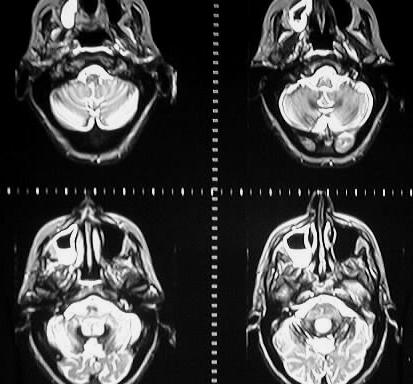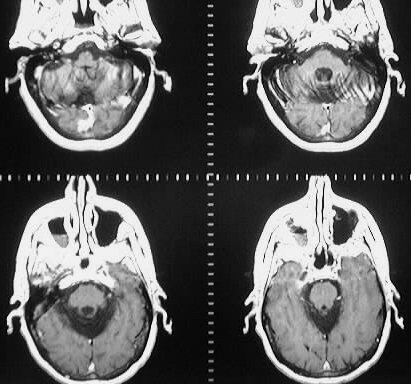


Superficial Siderosis
FINDINGS:
Sagittal T1, axial T1, and axial T2WI show a hypointense
coating of the brainstem and cerebellum. Note the increased conspicuity
of this coating on the T2WI due to local dephasing from hemosiderin (blooming).
Moderate vermian atrophy is present as well.
DISCUSSION:
Superficial siderosis results from chronic hemorrhage
in the subarachnoid space leading to coating of the brain surfaces with
hemosiderin. Although some cases may be associated with tumors such as
hemangioblastoma, the offending lesion is rarely identified. Cerebellar
atrophy is commonly associated with this condition.